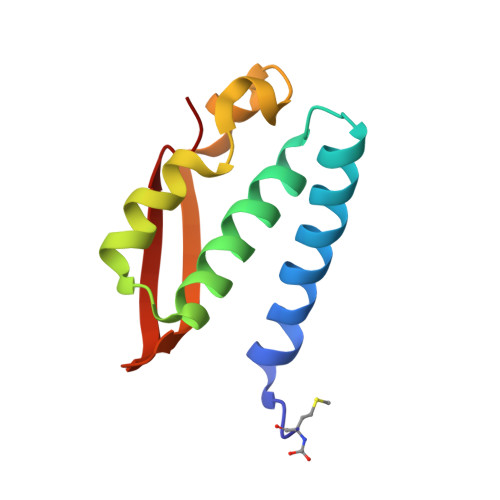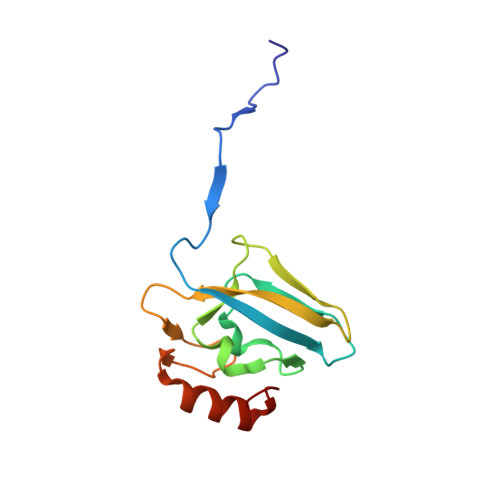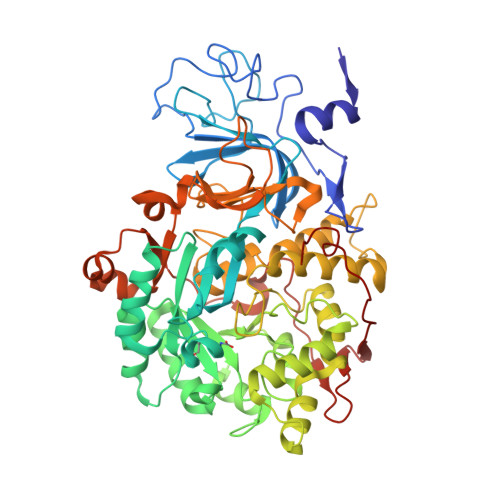Kinetic and structural analysis of the inactivation of urease by mixed-ligand phosphine halide Ag(I) complexes.
Mazzei, L., Cirri, D., Cianci, M., Messori, L., Ciurli, S.(2021) J Inorg Biochem 218: 111375-111375
- PubMed: 33711632
- DOI: https://doi.org/10.1016/j.jinorgbio.2021.111375
- Primary Citation of Related Structures:
7B58, 7B59, 7B5A - PubMed Abstract:
Soft metal ions can inactivate urease, a Ni(II)-dependent enzyme whose hydrolytic activity has significant implications in agro-environmental science and human health. Kinetic and structural studies of the reaction of Canavalia ensiformis urease (JBU) and Sporosarcina pasteurii urease (SPU) with Ag(I) compounds of general formula [Ag(PEt 3 )X] 4 (X = Cl, Br, I), and with the ionic species [Ag(PEt 3 ) 2 ]NO 3 , revealed the role of the Ag(I) ion and its ligands in modulating the metal-enzyme interaction. The activity of JBU is obliterated by the [Ag(PEt 3 )X] 4 complexes, with IC 50 values in the nanomolar range; the efficiency of the inhibition increases in the Cl - < Br - < I - order. The activity of JBU upon [Ag(PEt 3 ) 2 ]NO 3 addition decreases to a plateau corresponding to ca. 60% of the original activity and decreases with time at a reduced rate. Synchrotron X-ray crystallography on single crystals obtained after the incubation of SPU with the Ag(I) complexes yielded high-resolution (1.63-1.97 Å) structures. The metal-protein adducts entail a dinuclear Ag(I) cluster bound to the conserved residues αCys322, αHis323, and αMet367, with a bridging cysteine thiolate atom, a weak Ag … Ag bond, and a quasi-linear Ag(I) coordination geometry. These observations suggest a mechanism that involves the initial substitution of the phosphine ligand, followed by a structural rearrangement to yield the dinuclear Ag(I) cluster. These findings indicate that urease, in addition to the active site dinuclear Ni(II) cluster, possesses a secondary metal binding site, located on the mobile flap domain, capable of recognizing pairs of soft metal ions and controlling catalysis.
Organizational Affiliation:
Laboratory of Bioinorganic Chemistry, Department of Pharmacy and Biotechnology (FaBiT), University of Bologna, Via Giuseppe Fanin 40, I-40127 Bologna, Italy. Electronic address: luca.mazzei2@unibo.it.























